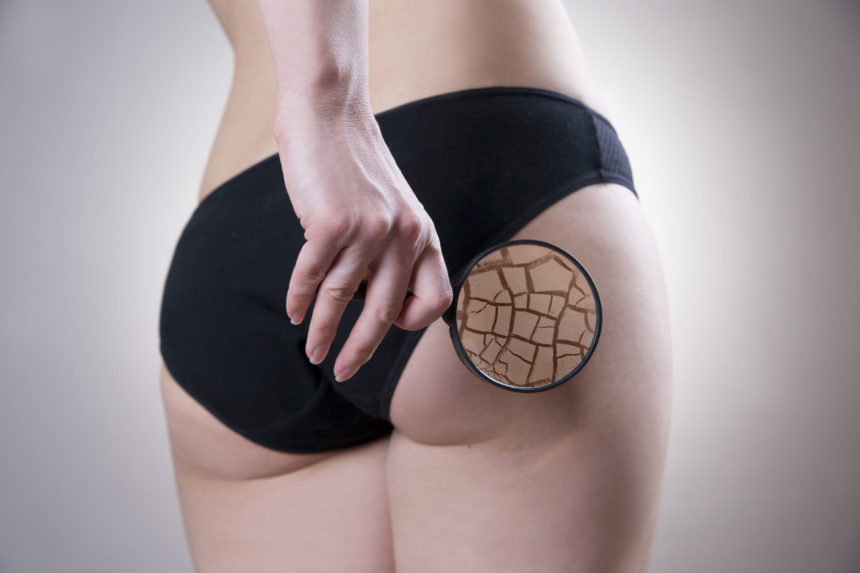Genetic cellulite. Where cellulite is concerned, how are genetics involved? Genetics play an important role in the development of cellulite. Cellulite affects up to 90 percent of women at some point in their lives.
Many women see it as a real enemy, above all when they need to undress, particularly during the summer, because the areas of the body where it nests most are the thighs, buttocks and arms.
Genetic cellulite: the genetic causes
Inherited genes can predispose women to cellulite. While several factors, including:
- Race
- Metabolism
- Sex
- Distribution of body fat
- Circulatory system
- Lymphatic system
- Hormones
- Ageing
can play a role in the development of cellulite; heredity is considered to be involved in this process.
According to several studies, researchers have concluded that it is more common in female Caucasians.
Genetic cellulite: what is cellulite?
According to certain theories accepted by the scientific community, cellulite is the result of fat deposition in the adipocytes (adipose cells) and water retention. When adipocytes grow, the connective tissue they are surrounded by pulls on the surface of the skin and deforms it. At the same time, the circulation is compromised and toxins accumulate. This is when cellulite appears, creating the inevitable appearance of orange peel skin.
Medical and scientific communities nowadays consider it almost like a disease, not so much because of its aesthetic value, but because it could have psychological implications that can compromise the quality of life, as well as presenting more serious medical cases.
Genetic cellulite: how to identify predisposition
Chromosome 17 is not associated with anything specific, but it is here that the gene variant (enzyme that converts angiotensin I) responsible for the formation of cellulite is found. In the genetic test for predisposition to cellulite, this enzyme becomes important and revealing. Nowadays, a genetic test is available that identifies predisposition towards moderate to severe cellulite. The test, which is very expensive, shows whether you will have cellulite like your ancestors or not!
Genetic cellulite: how to take advantage of genetics
The genes associated with cellulite can provide new information on this aesthetic problem to evaluate treatments to defeat cellulite.
Cellulite is a blemish, characterised by orange peel skin, and is more common in women, particularly after adolescence. Cellulite is multifactorial and above all, has several causes that can contribute to its formation.
Hereditary factors would seem to play an important role in the development of cellulite, although scientific evidence regarding genetics and cellulite is not yet available.
In the past, there have been attempts to show the correlation between cellulite and DNA.
The test is simple and non-invasive, and merely involves taking a saliva sample for genetic investigations into the cellulite treatment with the most effective results.
Genetic cellulite: the well-known orange peel skin is a problem for over 90% of women worldwide. Thanks to technological innovations in the medical field, it is possible to predict whether you are predisposed towards this blemish.
In this way:
- You can resort to the best treatment
- Use the best cosmetic or medical methods
- Cure the orange peel skin blemish
- Inhibit the progression of cellulite
Genetic cellulite: the test results
After the test, you can get two answers that can reveal an outcome of:
- Positive
- Negative
Positive result:
High percentage chance of developing moderate to severe cellulite. Intensive treatments.
Negative result:
A percentage that shows average cellulite. Care and prevention is recommended.
Genetic cellulite: what to do if the test result is positive
Women with a positive test result are genuinely at risk of developing moderate to severe cellulite.
During the consultation, the doctor should provide all the information about the plan for the best treatment.
The next step is selecting treatments that will improve the aesthetic appearance of the skin.
In this way it could also be used for prevention.
Genetic cellulite: what to do if the test result is negative
If the result is negative, you may have time to prevent cellulite formation and thus slow down its appearance. It is therefore possible to maintain healthy, compact skin.
Genetic cellulite: fight against cellulite
While being aware that genetic data can act as a warning of a predisposition towards cellulite, it should always be borne in mind that there is still no cure to completely eliminate or prevent the development of cellulite.


